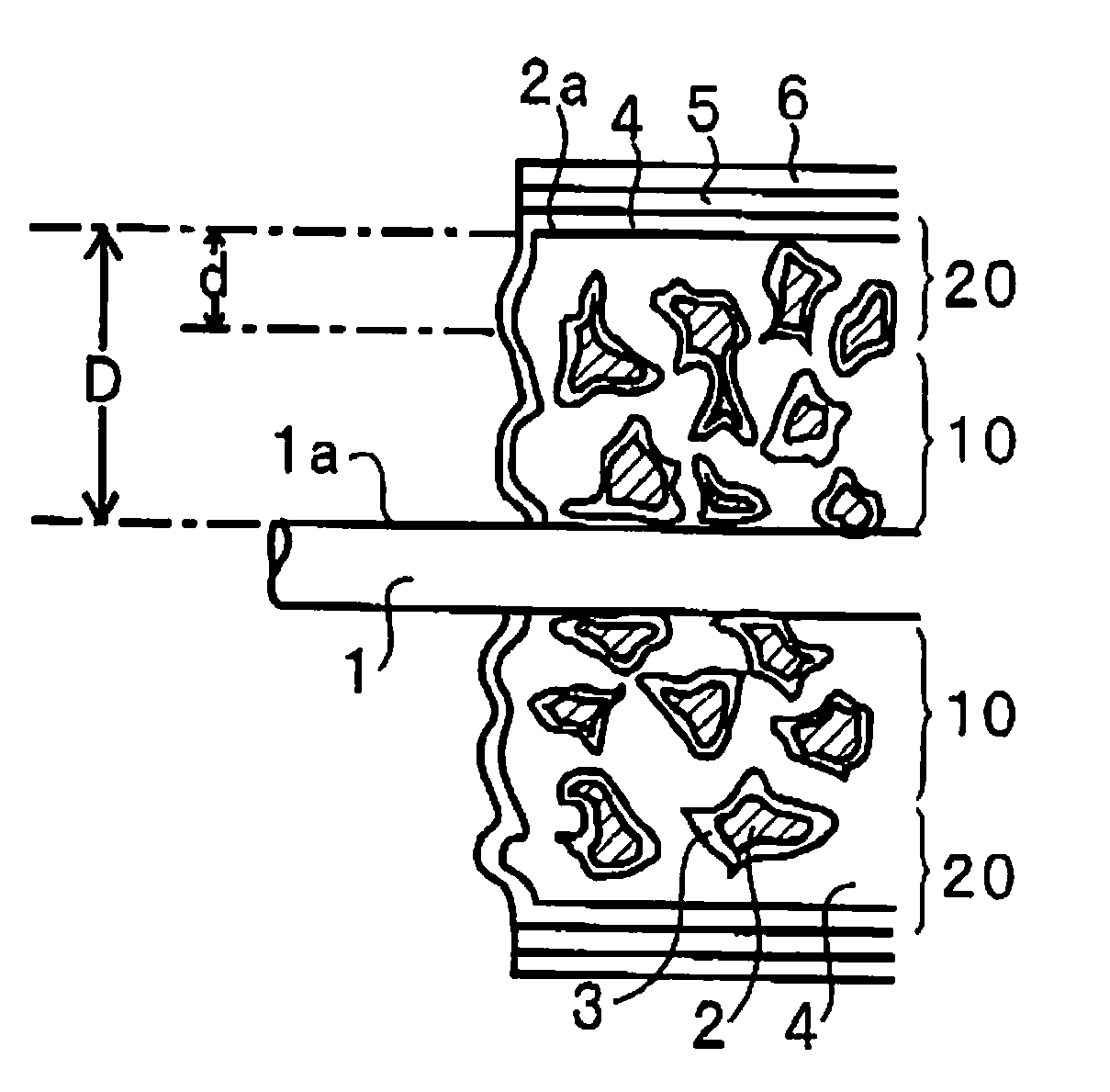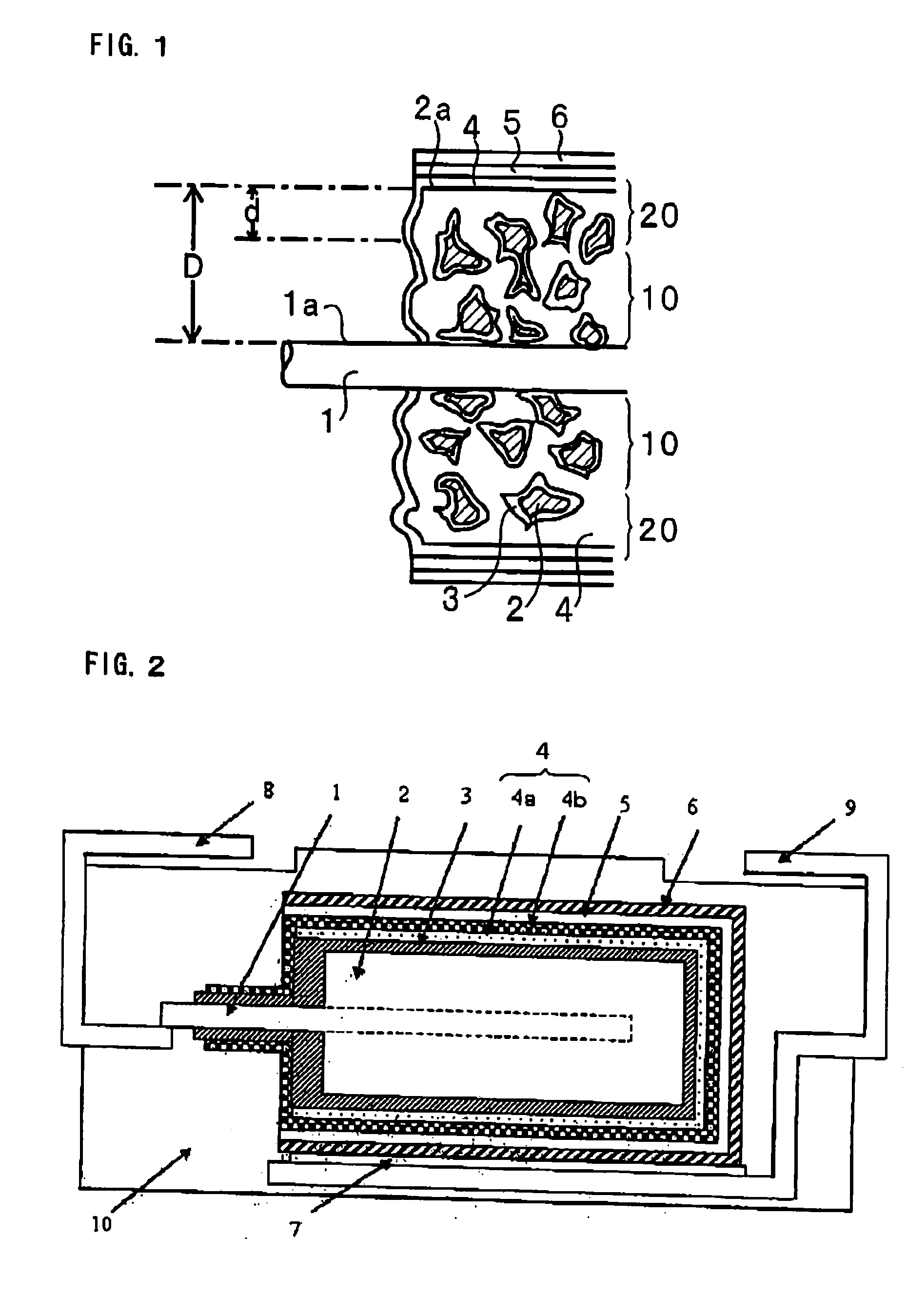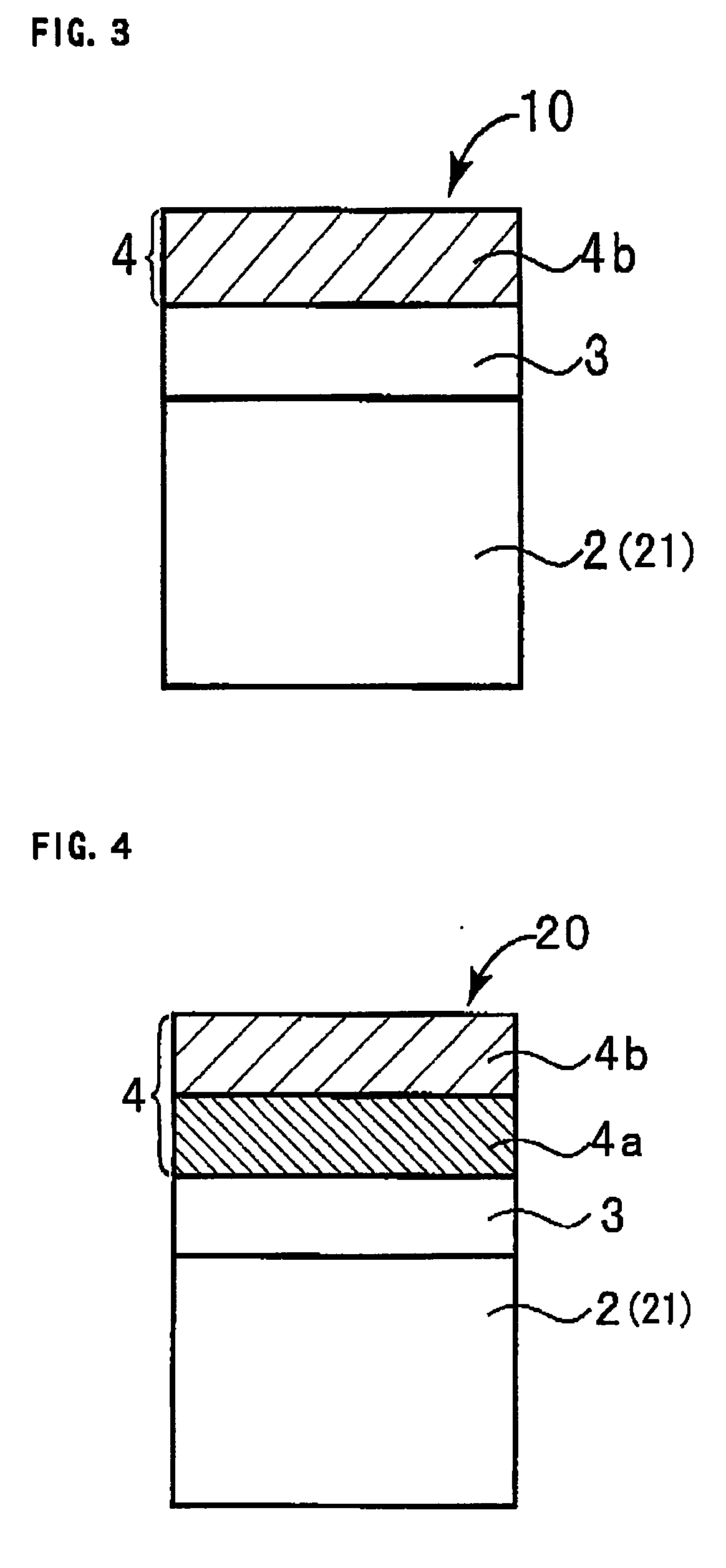Solid electrolytic capacitor and its production method
a technology of solid electrolytic capacitors and production methods, which is applied in the direction of fixed capacitor details, variable capacitors, fixed capacitors, etc., can solve the problem that the anode lead is not always positioned near the center of the porous body, and achieve the effect of reducing esr
- Summary
- Abstract
- Description
- Claims
- Application Information
AI Technical Summary
Benefits of technology
Problems solved by technology
Method used
Image
Examples
first embodiment
[0046]FIG. 2 is a cross-sectional view showing one embodiment of a solid electrolytic capacitor of the invention.
[0047]As shown in FIG. 2, one end of an anode lead 1 is embedded inside an anode 2. The anode 2 is formed of a porous body of a valve metal or its alloy. The porous body is formed by shaping a powder of a valve metal or its alloy and sintering it. In forming the sintered body, one end of an anode lead 1 is disposed inside the shaped body, whereby the anode lead 1 is embedded inside the anode 2.
[0048]On the surface of the anode (porous body) 2, formed is a dielectric layer 3. The dielectric layer 3 is formed by anodic oxidation of the surface of the anode (porous body) 2. Not shown in FIG. 2, a dielectric layer 3 is also formed on the surface in the inside part of the anode (porous body) 2.
[0049]FIG. 1 is a schematic cross-sectional view showing the inside part of the anode (porous body) 2. As shown in FIG. 1, the anode 2 is a porous body, and therefore, a dielectric layer...
second embodiment
[0064]The this embodiment will be described with respect to only the different matters from the first embodiment in the following.
[0065]FIGS. 7A to 7E are perspective views showing a process fox producing a solid electrolytic capacity of another embodiment of the invention. FIG. 8 is a schematic cross-sectional view between A-A in FIG. 7A. FIG. 9 is a schematic cross-sectional view between A-A in FIG. 7B. FIG. 10 is a schematic cross-sectional view between A-A in FIG. 7C. FIG. 11 is a schematic cross-sectional view between A-A in FIG. 7D. FIG. 12 is a schematic cross-sectional view between A-A in FIG. 7E.
[0066]FIG. 7A shows an anode 2 with an anode lead 1 embedded therein. The anode 2 is a porous body having a rectangular shape, and the anode lead 1 is embedded therein through the center part of the side 2b thereof. As shown in FIG. 7A, the anode 2 has a flattened rectangular shape that is long in the X direction and is short in the Y direction.
[0067]The schematic cross-sectional vi...
example 1
Step 1:
[0088]First, a tantalum powder having a mean particle size of about 2 μm was sintered at about 1400° C. to form an anode of a porous sintered body with a tantalum metal lead wire embedded therein as an anode lead. The anode was processed for anodic oxidation for 10 hours at a constant voltage of 10 V in an aqueous 0.1 wt. % phosphoric acid solution kept at 40° C., thereby forming a dielectric layer of tantalum oxide on the surface in the inside part of the anode (porous body) and on the surface in the outer peripheral part thereof.
Step 2:
[0089]Next, the body formed in the step 1 was dipped in an aqueous solution of an oxidizing agent comprising 20% by weight of tertiary iron p-toluenesulfonate for 5 minutes, and then in a liquid of ethylenedioxythiophene having a purity of about 99% by weight for 10 minutes, and thereafter it was taken out, and heat-treated at 110° C. for 10 minutes to form a polyethylenedioxythiophene layer.
[0090]Next, using an ammonium persulfate solution (...
PUM
| Property | Measurement | Unit |
|---|---|---|
| Temperature | aaaaa | aaaaa |
| Fraction | aaaaa | aaaaa |
| Fraction | aaaaa | aaaaa |
Abstract
Description
Claims
Application Information
 Login to View More
Login to View More - R&D
- Intellectual Property
- Life Sciences
- Materials
- Tech Scout
- Unparalleled Data Quality
- Higher Quality Content
- 60% Fewer Hallucinations
Browse by: Latest US Patents, China's latest patents, Technical Efficacy Thesaurus, Application Domain, Technology Topic, Popular Technical Reports.
© 2025 PatSnap. All rights reserved.Legal|Privacy policy|Modern Slavery Act Transparency Statement|Sitemap|About US| Contact US: help@patsnap.com



